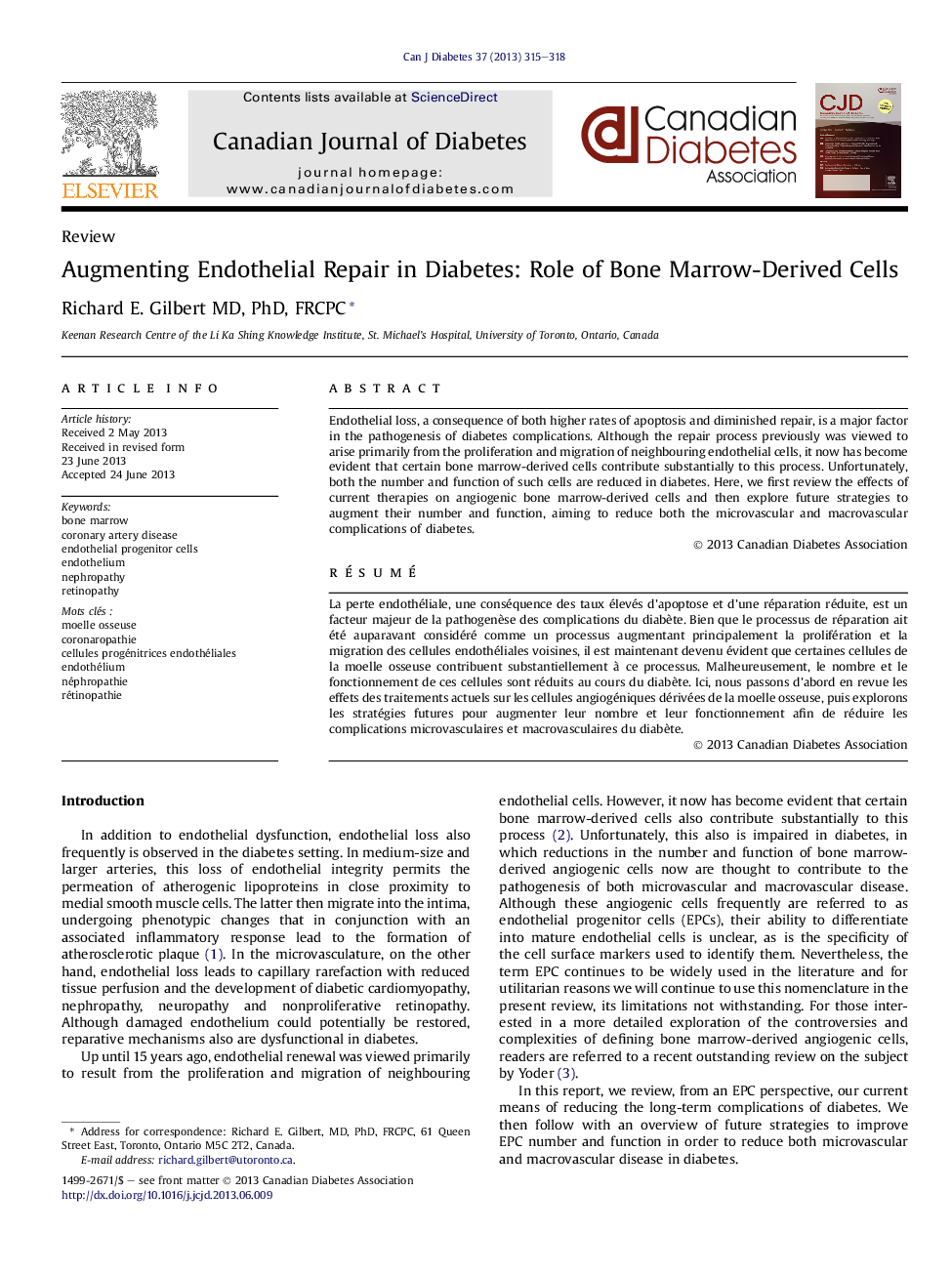| Article ID | Journal | Published Year | Pages | File Type |
|---|---|---|---|---|
| 3255338 | Canadian Journal of Diabetes | 2013 | 4 Pages |
Endothelial loss, a consequence of both higher rates of apoptosis and diminished repair, is a major factor in the pathogenesis of diabetes complications. Although the repair process previously was viewed to arise primarily from the proliferation and migration of neighbouring endothelial cells, it now has become evident that certain bone marrow-derived cells contribute substantially to this process. Unfortunately, both the number and function of such cells are reduced in diabetes. Here, we first review the effects of current therapies on angiogenic bone marrow-derived cells and then explore future strategies to augment their number and function, aiming to reduce both the microvascular and macrovascular complications of diabetes.
RésuméLa perte endothéliale, une conséquence des taux élevés d’apoptose et d’une réparation réduite, est un facteur majeur de la pathogenèse des complications du diabète. Bien que le processus de réparation ait été auparavant considéré comme un processus augmentant principalement la prolifération et la migration des cellules endothéliales voisines, il est maintenant devenu évident que certaines cellules de la moelle osseuse contribuent substantiellement à ce processus. Malheureusement, le nombre et le fonctionnement de ces cellules sont réduits au cours du diabète. Ici, nous passons d’abord en revue les effets des traitements actuels sur les cellules angiogéniques dérivées de la moelle osseuse, puis explorons les stratégies futures pour augmenter leur nombre et leur fonctionnement afin de réduire les complications microvasculaires et macrovasculaires du diabète.
